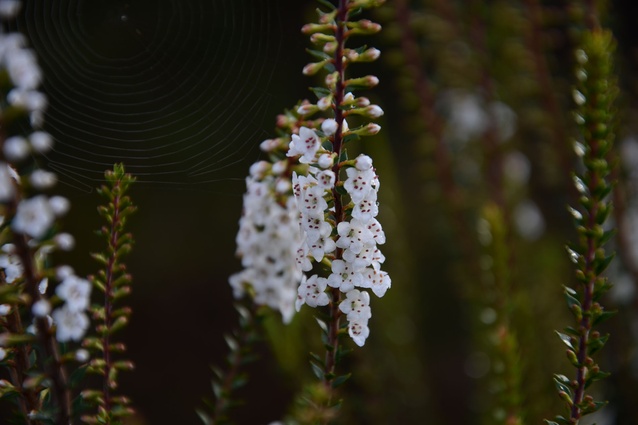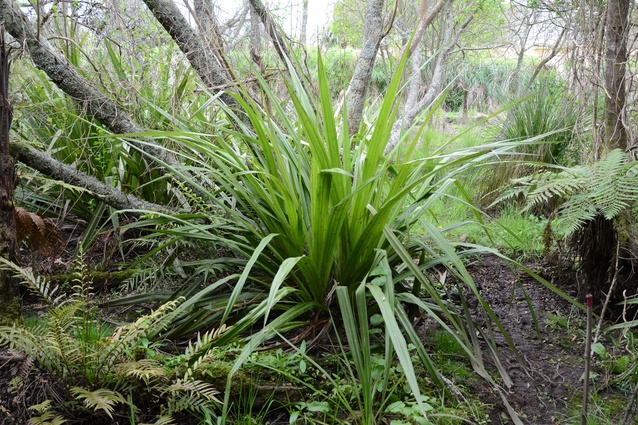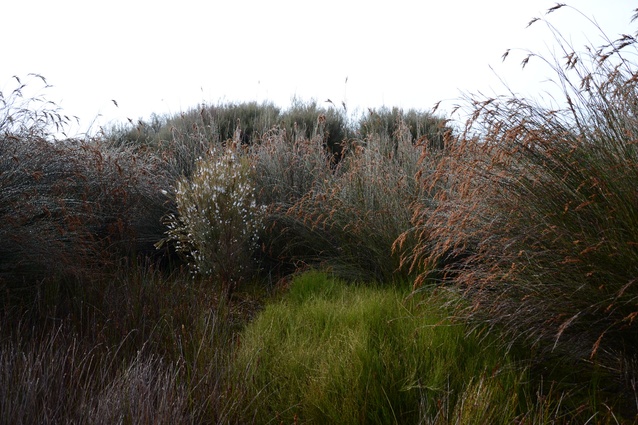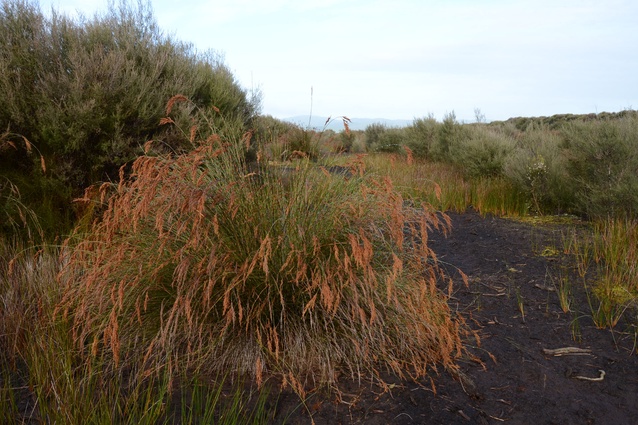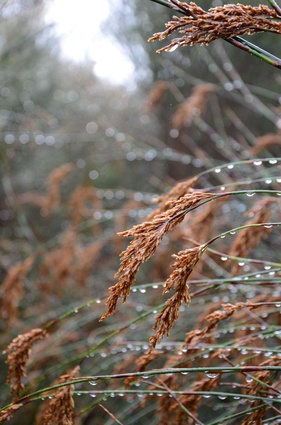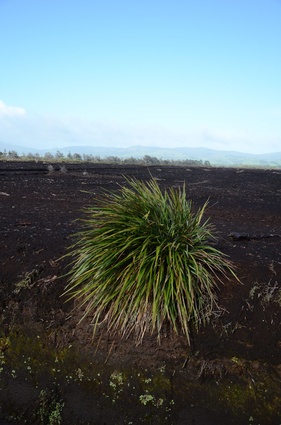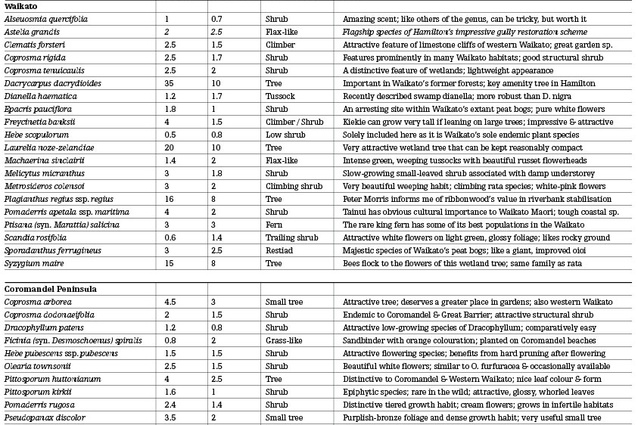Through the looking glass
In part three of our series looking at regional variations in native plantlife, Philip Smith looks at the Waikato and Coromandel, and takes a trip to the Torehape Peat Dome on the Hauraki 'Plains'.
Wetlands are often magical places – teeming with birds and insect life, and divorced from the world around, by virtue of their watery nature. Their beauty is also frequently unexpected, as it only fully reveals itself when we are immersed within them. This is particularly true of places like Torehape Peat Dome (on the Hauraki ‘Plains’), which appears drab and unpromising from the outside, yet possesses an otherwordly beauty that unfolds as one penetrates its interior.
Upon visiting this remarkable place in late spring, the pure white flowers of Epacris pauciflora lit up its ordered stems, whilst the graceful, drooping flowerheads and long, jointed canes of Sporadanthus ferrugineus created a surreal atmosphere that was reminiscent of the fynbos vegetation of South Africa’s Western Cape (where Sporadanthus’s relatives have achieved their greatest diversity). Spiderwebs decorated the spaces between the leaves of rushes and restiads, and small moths took to the air as we brushed through the manuka – possibly including the minor entomological celebrity, Fred the Thread (a tiny moth whose caterpillars may be the thinnest in the world).
I approached this visit with a degree of ambivalence, as the site is administered by a peat mining operation. It was therefore a relief to encounter a relatively sustainable methodology to peat harvesting, that includes a rotational policy, progressive revegetation of all harvested areas, and a limit to the depth to which peat may be harvested. When one witnesses this in contrast to the surrounding grazed paddocks that betray no evidence of their ecological history (they were once peat bogs as well), it lends credence to the mining operator’s stated enthusiasm towards this special environment.
Within Hamilton City itself, efforts are afoot to rebuild lost landscapes, through the laudable Gully Restoration Programme – a scheme that has identified Hamilton’s gullies as regionally significant ecological systems. One of the most important species to be promoted for gully restoration is the swamp astelia (Astelia grandis), an impressive brute that is, in my opinion, a superior alternative to A. chathamica for landscaping in northern parts of New Zealand.
Other important species for gully restoration include swamp maire (Syzygium maire), pukatea (Laurelia novae-zelandiae), kiekie (Freycinetia banksii) and kahikatea (Dacrycarpus dacrydioides), all of which endure in a forest remnant by the Waikato River (Hammond Bush) where long-tailed bats maintain a rare presence in an urban environment.
As one travels westward to the King Country and the Waikato’s western coastline, an impressive array of limestone landscapes play host to distinctive sets of plants. Gardenworthy members of these ecologies include an attractive, white-flowered umbellifer, Scandia rosifolia, an underutilised, scented species of Clematis (C. forsteri), and an elegant weeping rata called Metrosideros colensoi.
To the east, the vast, flat expanse of the former Hauraki swamp (now converted into a mostly featureless sea of pasture) forms a stark contrast to the forested ranges of the Coromandel Peninsula. The undulating topography and winding coastline of the Coromandel gives rise to a wide variety of ecologies, from coastal dunes (where the orange-leaved sandbinder, pingao, is being assisted in its recovery) to the subalpine scrub of Te Moehau (where several montane species make their northernmost appearance in the country).
The Kauaeranga Valley and the high points above it contain interesting assemblages of plants that occur in few other places – including a compact species of Dracophyllum (D. patens), the Coromandel Hebe (H. pubescens ssp. pubescens) and a particularly dignified species of Coprosma, called
C. dodonaeifolia. The Coromandel Range, with its largely volcanic origins, is a suitable point at which to end this survey of the Waikato’s flora, as the next subject of this series of regional guides is the Central North Island (where volcanic activity continues to actively shape landscapes and ecologies).
Note: I would like to acknowledge Paul Duffy, who generously shared his knowledge of the Waikato’s natural history with me, and Peter Morris, who provided valuable insights into the restoration of Waikato’s fragmented habitats.
Be sure to check out the first two installments of Philip’s regional planting guides: Northland and Auckland.

